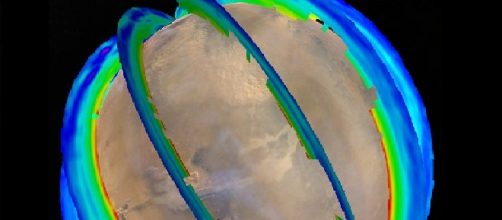Studying seasonal patterns in Mars has been one of the main science priorities., as they may allow scientists to learn much about the red planet. Atmospheric temperature data was obtained from studying large regional dust storms. The data was collected by NASA's Mars Reconnaissance Orbiter (MRO) during one half of a Martian year (one earth year) of analysis.
Dust storms during six recent Martian years
Even though dust storms have been recorded for over a decade on the Mars ‘surface, scientists were only able to recognize a regularity when analyzing the thermal data instead of the observable dust.
They had detected three distinct regional dust storms developing consecutively at approximately the same times of a year, during summer and spring in the southern hemisphere.
How is heat trapped by dust?
Dust in the Martian surface absorbs sunlight and the difference in temperature than it can absorbed exceeds by 35 C° (63 F°) the one absorbed by clean air. The heat absorbed by the dust affects the distribution of wind globally. This causes downward motion of heat that may warm areas of clean air outside the dusty regions. Temperature recordings show both, direct and indirect effects of dust storms in the Martian atmosphere.
Regional dust storms
Three large dust storms, categorized as types A, B, and C, have developed for each of the six Martian years researched.
Numerous small storms form in Mars ‘north pole in autumn. When this storms break off, they move south and when they reach the south, in mid-spring, they get heated and blast into a larger dust storm dubbed type A. southern spring and summer in Mars tends to be warmer than the related seasons in the north due to the eccentricity of Mars´orbit.
Type B storm develops close to the south pole just before the beginning of the summer. It´s origin is believed to be due to the developing winds at the boundaries of the retreating CO2 in the southern polar cap. Type C storm develops following the conclusion of type B storm, during the northern winter and displaces to the southern hemisphere, similarly to Type A storm.
Type C storm varies in temperature and duration more that the other two types of storms.
The prediction of large storms on Mars could bring safety benefits for robotics and humans on the Martian surface, while undertaking scientific studies. The recognition of types of storms and patterns provide a broader understanding at how seasonal weather events influence mars at a global scale.

